#agile test automation
Explore tagged Tumblr posts
Text
Automated Testing vs. Manual Testing: Which One is Right for Your Project?

Achieving high-quality, reliable software stands as a fundamental requirement in software development. Successful testing functions as an essential tool to discover faults and build performance capabilities that create better user experience outcomes. Two main testing methods dominate the field: automated testing and manual testing. The process of quality software assurance uses different testing approaches that demonstrate their own advantages as well as weaknesses according to specific project requirements and scenarios. We will explore the specifics to determine which testing process works best for your system development efforts.
1. What Is Manual Testing?
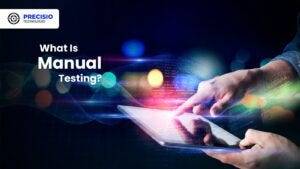
Manual testing involves a human tester manually executing test cases without using automation tools. Key Characteristics:
The methodology focuses its efforts on user interface together with usability and experience testing.
Human-centered applications where selection requires discretion include ad hoc testing and enumerative testing as well as examinations that need human evaluation.
Human performers are required during this approach; thus, it demands substantial time.
2. What Is Automated Testing?
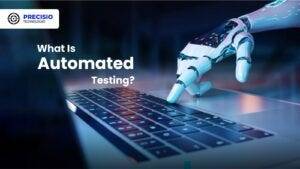
Software performing automated testing executes test cases through workflows and helpers. Key Characteristics:
Efficient for repetitive and regression testing.
Users must spend money on tools along with developing custom scripts for testing.
Reduces human error.
3. Advantages of Manual Testing

Human Intuition: Software testing professionals can detect kernels through their human cognitive ability that automated tools cannot match. The observation and evaluation of visual elements runs more efficiently through human operatives instead of advanced tools.
Flexibility: This method suits exploratory testing specifically because there are no pre-determined scripts available.
Low Initial Investment: Running this approach does not need tool purchases or applications to develop automation frameworks.
Adaptable for UI/UX Testing: Running this approach does not need tool purchases or applications to develop automation frameworks.
4. Advantages of Automated Testing
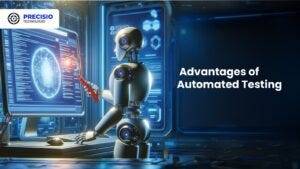
Speed: Executes repetitive tests much faster than humans.
Scalability: The system proves most effective for extensive projects that need constant system updates.
Accuracy: When performing recurring actions, automated systems minimize the chances of human mistakes.
Cost-Efficient in the Long Run: Once established and implemented, the system demands costly investments but ensures continuous development expenses decrease over time.
Better for CI/CD Pipelines: Such testing technology connects various development pipelines that support agile and DevOps methodologies.
5. Disadvantages of Manual Testing

Time-Consuming: The manual performance of repeated tests leads to delayed completion of projects.
Error-Prone: Large applications contain tiny bugs that human testers commonly fail to detect.
Not Ideal for Scalability: The process of increasing manual testing needs additional testers to avoid cost escalations.
6. Disadvantages of Automated Testing
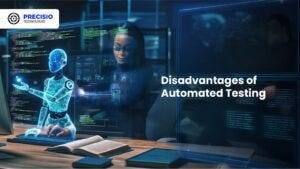
Initial Costs: Organizations must provide high financial resources to procure testing tools together with developing programming constructs.
Limited to Pre-Defined Scenarios: These testing approaches work poorly for handling exploratory or ad hoc testing.
Requires Maintenance: Test scripts need frequent updates when application changes occur.
Not Suitable for UI/UX Testing: Struggles with subjective user experience evaluations.
7. When to Use Manual Testing
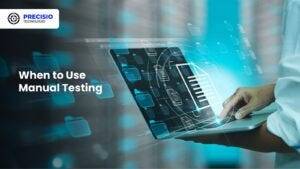
Small Projects: The testing method proves beneficial at a low cost for small applications and provides quick assessments.
Exploratory Testing: Testing this approach benefits projects whose scripts have not been defined yet or need evaluation for newly added features.
Visual and Usability Testing: Performing assessments on interface components together with design features.
8. When to Use Automated Testing
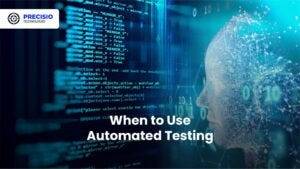
Large Projects: Handles scalability for projects with frequent updates.
Regression Testing: Program testing becomes more efficient through automation since automated assessments perform multiple tests following each update process.
Performance Testing: The system performs efficient capabilities to conduct load testing and stress testing.
Continuous Development Environments: Agile progression and DevOps implementations need automation as a core requirement.
READ MORE- https://www.precisio.tech/automated-testing-vs-manual-testing-which-one-is-right-for-your-project/
2 notes
·
View notes
Text
Boost Quality with Automation Testing Services

Software testing has always been a vital component of the development lifecycle, acting as a safeguard against errors, inefficiencies, and potential vulnerabilities. But in the fast-paced, innovation-driven world of modern IT, Automation Testing Services are no longer a luxury—they are a necessity.
As digital transformation accelerates and user expectations evolve, businesses are under increasing pressure to deliver flawless applications faster than ever. That’s where automated solutions come in. They allow teams to detect bugs early, enhance test coverage, and ultimately improve release cycles while keeping quality intact.
In this article, we’ll explore the ins and outs of Automation Testing Services, when and how to use them, and how they align with broader Software Testing Services and Agile Development Services for high-performing tech organizations.
What Are Automation Testing Services?
Defining Automation Testing Services
Automation Testing Services refer to the use of specialized software tools and frameworks to execute pre-scripted tests on a software application before it is released into production. These tools compare actual outcomes with expected outcomes, flagging bugs without human intervention.
Core Components of Automation Testing
Test Scripts: Written code that automates test cases.
Automation Frameworks: Reusable structures to streamline test case development (e.g., Selenium, Appium, TestNG).
Continuous Integration/Continuous Deployment (CI/CD): Tools like Jenkins integrate automated tests into development pipelines.
Reporting Tools: Provide real-time feedback and dashboards.
Why It Matters
He or she using manual testing alone can only go so far. Manual tests are repetitive, time-consuming, and susceptible to human error. Automated tests are consistent, faster, and can run 24/7, ensuring comprehensive and ongoing validation of code quality.
When to Use Automated Software Testing Services
Strategic Moments for Test Automation
Knowing when to use Automated Software Testing Services can significantly affect development costs and outcomes. They’re ideal when:
The application is stable: Changes to UI and features are infrequent.
Regression testing is frequent: Automation can rerun tests faster and with consistency.
Load and performance tests are needed: Simulating thousands of users manually is impractical.
You want to integrate with CI/CD: Test automation complements Agile and DevOps workflows.
Automation is Not a One-Size-Fits-All
They should still use manual testing when:
Exploratory or usability testing is needed.
The application is in the very early stages of development.
Business logic is still being defined or rapidly changing.
Your Checklist for Partnering with an Automation Testing Company
What to Look for in an Automation Testing Partner
Before committing, use this checklist to evaluate the potential of an Automation Testing Services provider:
1. Technical Expertise
Do they understand your domain?
Can they work with tools like Selenium, Cypress, or Playwright?
2. Agile Compatibility
Do they align with your Agile Development Services model?
Can they work in iterative sprints with flexible goals?
3. Tool Integration
Do their automation tools integrate with your CI/CD pipeline?
4. Reporting and Documentation
Are their reporting tools transparent and actionable?
5. Security Practices
Is test data handled securely?
Are they compliant with GDPR, HIPAA, etc.?
6. Test Maintenance Capabilities
Can they update test scripts when your app changes?
7. Proven Experience
Do they have a history of delivering reliable Software Testing Services?
Benefits of Automation Testing Services
Why Organizations Rely on Test Automation
1. Speed and Efficiency
They can run tests in seconds that would take hours manually.
2. Reusability
Test scripts can be reused across different projects, reducing duplication.
3. Cost Effectiveness
Although initial setup costs are higher, automation saves money in the long run.
4. Increased Coverage
Automated scripts can test a broader set of conditions and variables.
5. Continuous Testing
Test early, test often—an ideal match for Agile Development Services.
How Automation Testing Complements Software Testing Services
The Relationship Between Manual and Automated Testing
It’s important to note that Automation Testing Services are a subset of broader Software Testing Services, which include:
Functional Testing
Usability Testing
Compatibility Testing
Security Testing
While automation covers repetitive tasks, manual efforts still play a key role in exploratory and human-centric validation.
Blended Strategy Works Best
They use automation for consistency and manual testing for creative, one-off scenarios. This hybrid model leads to better coverage and more reliable outcomes.
How Agile Development Services Fuel Automation
Agile and Test Automation: A Perfect Match
Agile Development Services thrive on rapid iterations and continuous feedback. Test automation aligns perfectly by providing fast feedback loops and reducing time-to-market.
Automation in Agile Sprints
He or she using Agile will benefit from automation at multiple points:
Unit tests after each code check-in.
Integration tests during daily builds.
Regression tests before releases.
Tools That Work Well in Agile Environments
Jenkins + Selenium: For CI/CD pipelines.
JIRA + Zephyr: For test management.
Docker + Kubernetes: For test environment orchestration.
Trends Shaping the Future of Automation Testing
What’s New in 2025?
1. AI-Powered Testing
AI tools can now write and optimize test cases automatically. They reduce maintenance and make testing more intelligent.
2. Scriptless Automation
Tools like TestCraft and Katalon offer low-code/no-code platforms, allowing even non-technical users to create test scenarios.
3. Shift-Left Testing
Testing starts earlier in the lifecycle, even before coding begins.
4. Hyperautomation
The combination of multiple automation technologies to streamline not just testing but also test management and reporting.
Key Takeaways
Automation Testing Services speed up testing, enhance coverage, and support continuous integration.
Use automation strategically—when apps are stable and regression tests are frequent.
Align with partners that support your CI/CD and Agile Development Services.
Software Testing Services still require manual testing in many areas—automation is not a silver bullet.
Embrace the latest trends like AI, scriptless automation, and shift-left strategies.
Conclusion
In today’s software landscape, Automation Testing Services are more than just a technical upgrade—they’re a necessity for businesses that want to stay competitive, agile, and customer-focused.
They enhance efficiency, reduce human error, and enable fast, reliable deployment cycles that are essential in Agile Development Services environments.
Still, automated testing is not the only answer. A thoughtful blend of automated and manual Software Testing Services creates the best results—ensuring software is robust, user-friendly, and ready for the demands of the market.
By integrating the right tools, adopting a flexible mindset, and partnering with experienced providers, companies can truly reap the benefits of automated testing.
#Automation Testing Services#Automated Testing Services#Automation Testing Company#Test Automation Services#Software Testing Services#Agile Development Services
0 notes
Text
GQAT Tech’s QA Arsenal: Powerful Tools That Make Quality Assurance Smarter
In this technology-driven age, delivering high-quality software is not an optional function but a necessity. Clients now expect us to produce digital products— apps, websites, etc.-- that are made quickly and error-free. The best way to achieve this is with a quality assurance (QA) process and effective tools to adapt to their needs.
The GQAT Tech QA team calls their QA efficient and effective tools combined, and their QA arsenal productive platforms, automation, tools, and proven processes. These testing tools and approaches can help a QA team find bugs more quickly, decrease hands-on effort, and allow more test coverage depending on the software project.
Now, let's look at what a QA Arsenal is, why it is important, and how QA will help your business produce better software.
What is the QA Arsenal?
The "QA Arsenal" refers to the collection of tools, frameworks, and strategies at GQAT Tech that the QA team employs to provide quality testing to clients. The QA Arsenal is like a toolbox, where everything a tester needs to complete the project is in the toolbox.
It includes:
Automation testing tools
Manual testing techniques
Defect tracking systems
Performance testing platforms
Mobile and web testing tools
CI/CD integrations
Reporting and analytics dashboards
What Makes GQAT’s QA Arsenal Unique?
We do not use tools haphazardly. We use the most appropriate tools based on the client's type of project, technology stack, service timeline, and quality. The QA Arsenal is designed to offer flexibility and therefore considers:
Web apps
Mobile apps
Embedded systems
IoT devices
Enterprise software
Whether functional test, compatibility test, API test, performance test, GQAT Tech utilizes a custom mixture of tools to ensure that it is reliable, secure, and ready for launch.
Tools Included in the QA Arsenal
Here are some common tools and platforms GQAT Tech uses:
🔹 Automation Tools
Selenium – For web application automation
Appium – For mobile app automation
TestNG / JUnit – For running and managing test cases
Robot Framework – For keyword-driven testing
Postman – For API testing
JMeter – For performance and load testing
🔹 Defect & Test Management
JIRA – To log, track, and manage bugs
TestRail / Zephyr – For test case management
Git & Jenkins – For CI/CD and version control
BrowserStack / Sauce Labs – For cross-browser and device testing
How It Helps Clients
Using the QA Arsenal allows GQAT Tech to:
Detect Bugs Early – Catch issues before they reach end-users
Save Time – Automation reduces time spent on repetitive tasks
Test on Real Devices – Ensures compatibility across systems
Generate Reports – Easy-to-read results and test status
Integrate with DevOps – Faster release cycles and fewer rollbacks
Improve Product Quality – Fewer bugs mean a better user experience
Real Results for Real Projects
GQAT Tech’s QA Arsenal has been successfully used across different domains like:
FinTech
Healthcare
E-commerce
Travel & Transport
EdTech
AI and IoT Platforms
With their domain expertise and knowledge of tools, they help businesses go faster, mitigate risks, and build customer diligence.
Conclusion
Building a great QA team is essential, but having them equipped with the right tools makes all the difference. GQAT Tech’s QA Arsenal provides their testers with everything they need to test faster, smarter, and more comprehensively.
If you are building a digital product and want to ensure it is released in the real world, you need a testing partner who does not leave things to chance. You need a testing partner with a battle-tested QA arsenal.
💬 Ready to experience smarter quality assurance?
👉 Explore GQAT Tech’s QA Arsenal and get in touch with their expert team today!
#QA Arsenal#Software Testing Tools#Quality Assurance Strategies#Automation Testing#Manual Testing#Selenium#Appium#Test Management Tools#CI/CD Integration#Performance Testing#Defect Tracking#Cross-Browser Testing#GQAT Tech QA Services#Agile Testing Tools#End-to-End Testing
0 notes
Text
Automated Testing the Future of Software Testing
Explore how automated testing is revolutionizing software quality assurance, enhancing efficiency and accuracy in today’s digital landscape.
In the hastily evolving landscape of software development, the need for green and reliable checking out methods has by no means been greater. As packages grow to be more complicated and necessary to our day by day lives, the demand for first-rate warranty has surged. Enter automated testing—a modern solution that is reworking the way software program is tested. This blog explores the evolution,…

View On WordPress
#Agile Development#AIin Testing#Automated Testing#Cloud Testing#Continuous Testing#Quality Assurance#Software Testing#Tech Trends#Test Strategy#Testing Automation
0 notes
Text
Revolutionizing Application Testing in Agile Environments: Strategies for Success
In today's fast-paced digital landscape, traditional application testing methods often struggle to keep up with rapid development cycles. As businesses strive for quicker releases and continuous updates, the need for efficient and effective testing strategies has never been more critical. Enter the world of agile testing, where innovative approaches are transforming how we ensure software quality and drive innovation.
Agile testing is not merely about executing tests; it's about seamlessly integrating validation processes into the development workflow. By embracing agile methodologies, organizations can leverage cutting-edge techniques to enhance their software testing practices and deliver superior products to market faster than ever before.
key strategies for optimizing application testing in agile environments:
Embrace the "Shift Left" Approach
The "Shift Left" philosophy is fundamental to agile testing, emphasizing the importance of early application testing in the development process. Unlike traditional waterfall models, where testing occurs at the end, agile encourages validation from the outset. This approach incorporates unit testing and functional testing to ensure each component is thoroughly validated during development.
By integrating validation testing early, teams can significantly reduce defect inflow in the final product. This proactive strategy not only saves time but also minimizes costs associated with post-deployment bug fixes.
Harness the Power of AI Automation
As development speeds increase, manual testing often becomes a bottleneck. AI automation testing offers a powerful solution to this challenge. AI-powered tools can accelerate testing processes by identifying key areas for validation, generating test cases, and even predicting potential failure points.
AI automation is particularly effective in enhancing regression testing. By learning from past test results, AI can focus on areas with higher failure probabilities, improving test coverage and productivity. Moreover, AI-driven performance testing tools can simulate various user scenarios at scale, ensuring web application testing and mobile application testing are prepared for real-world usage.
Implement Continuous Testing with DevOps
In agile environments, the synergy between agile and DevOps practices is crucial. Continuous testing is the linchpin of this collaboration. By integrating testing into Continuous Integration/Continuous Deployment (CI/CD) pipelines, teams ensure that every code change undergoes automated testing before reaching production.
This approach accelerates the development process and enhances overall software quality. Automated tests, ranging from security testing to usability testing, are triggered with each commit, ensuring new features don't introduce vulnerabilities or compromise user experience.
Prioritize Agile Performance and Load Testing
As user expectations for application performance continue to rise, performance testing in agile setups becomes increasingly critical. Rather than conducting performance tests solely before release, agile advocates for continuous performance monitoring throughout the development cycle.
Modern tools enable teams to incorporate web application testing and mobile application testing into their agile workflows, providing real-time insights into application performance under various conditions. These continuous feedback loops help identify and address performance issues early, long before they impact end-users.
Emphasize User-Centric Testing
Agile methodologies place the user at the center of the development process. User testing involves frequent feedback loops that enable rapid iteration based on real user input. Similarly, accessibility testing should be ingrained in the process to ensure applications are usable by all, including those with disabilities.
Advanced AI-powered testing solutions can simulate a wide array of user interactions, providing valuable insights into how different user groups engage with applications. This information is invaluable for refining application design and functionality to meet genuine user needs.
Integrate Security Testing Throughout the SDLC
In an era of increasing cyber threats, security cannot be an afterthought. Agile development demands that security testing be integrated into every stage of the software development life cycle (SDLC). Automated security testing allows for continuous scanning of the codebase, identifying vulnerabilities as soon as they're introduced.
By embedding security testing within existing agile and DevOps processes, organizations can create more secure and resilient applications. This proactive approach ensures that software meets not only performance and usability standards but also rigorous security expectations.
Conclusion
Agile testing is revolutionizing how we approach software quality assurance, security, and user experience. By adopting these strategies, organizations can ensure their testing processes are as agile and responsive as their development cycles.
In a world where change is the only constant, staying ahead of the curve in testing methodologies is crucial. By embracing agile testing principles and leveraging cutting-edge technologies like AI automation, businesses can develop applications that are not only robust and secure but also deliver exceptional user experiences.
As we continue to navigate the complex landscape of software development, one thing is clear: agile testing is not just a trend—it's a necessity for organizations looking to thrive in the digital age. By investing in these advanced testing strategies, businesses can ensure their applications are ready to meet the challenges of tomorrow, today.
#application testing#agile testing#validation testing#ai automation testing#software testing#Performance Testing#web application testing#mobile application testing
0 notes
Text

Embark on a global bug hunt with our SDET team, leveraging cloud-based mobile testing to ensure your app achieves flawless performance across all devices and networks. With cutting-edge tools and a meticulous approach, we identify and eliminate bugs before they impact your users. https://rb.gy/jfueow #SDET #BugHunt #CloudTesting #MobileAppQuality #FlawlessPerformance SDET Tech Pvt. Ltd.
#Software Testing Companies in India#Software Testing Services in India#Test Automation Development Services#Test Automation Services#Performance testing services#Load testing services#Performance and Load Testing Services#Software Performance Testing Services#Functional Testing Services#Globalization Testing services#Globalization Testing Company#Accessibility testing services
Agile Testing Services#Mobile Testing Services#Mobile Apps Testing Services#ecommerce performance testing#ecommerce load testing#load and performance testing services#performance testing solutions#product performance testing#application performance testing services#software testing startups#benefits of load testing#agile performance testing methodology#agile testing solutions#mobile testing challenges#cloud based mobile testing#automated mobile testing#performance engineering & testing services#performance testing company#performance testing company in usa
0 notes
Text
A list of upcoming software testing conferences, software quality assurance and DevOps events taking place in 2024 all over the world.
1 note
·
View note
Text
Tenjin, an Intelligent, Auto-adaptive, and Agile Test Automation Solution
Tenjin stands out as an intelligent, auto-adaptive, and agile test automation solution designed to meet the evolving needs of modern software development teams. Its intelligent capabilities leverage advanced algorithms and machine learning to analyze test results, identify patterns, and optimize test scenarios automatically. This intelligent approach not only reduces manual effort but also enhances test coverage and identifies potential issues early in the development cycle.
Furthermore, Tenjin's auto-adaptive nature allows it to adjust testing strategies dynamically based on changing application requirements, environmental factors, and user feedback. This adaptability ensures that tests remain relevant and effective across different iterations and releases, promoting continuous improvement and faster time-to-market.
Moreover, Tenjin embraces agile principles by integrating seamlessly into agile development workflows. Its flexible architecture supports iterative development processes, enabling teams to execute tests rapidly and iteratively while maintaining high levels of accuracy and reliability.
By harnessing the power of Tenjin, software development teams can streamline their test automation solution, improve collaboration between development and QA teams, and deliver high-quality software products efficiently. With its combination of intelligence, adaptability, and agility, Tenjin empowers organizations to stay ahead in today's dynamic and competitive software development landscape.
0 notes
Text
Driving Innovation: A Case Study on DevOps Implementation in BFSI Domain
Banking, Financial Services, and Insurance (BFSI), technology plays a pivotal role in driving innovation, efficiency, and customer satisfaction. However, for one BFSI company, the journey toward digital excellence was fraught with challenges in its software development and maintenance processes. With a diverse portfolio of applications and a significant portion outsourced to external vendors, the company grappled with inefficiencies that threatened its operational agility and competitiveness. Identified within this portfolio were 15 core applications deemed critical to the company’s operations, highlighting the urgency for transformative action.
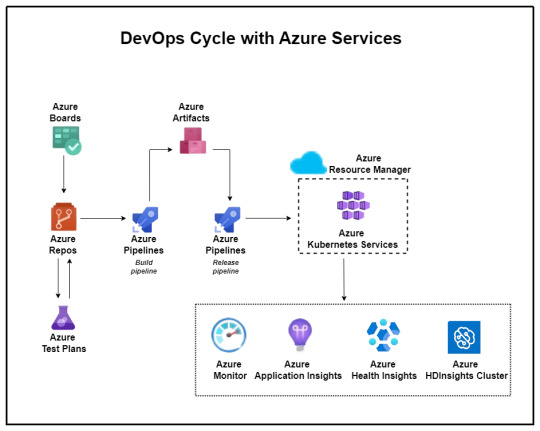
Aspirations for the Future:
Looking ahead, the company envisioned a future state characterized by the establishment of a matured DevSecOps environment. This encompassed several key objectives:
Near-zero Touch Pipeline: Automating product development processes for infrastructure provisioning, application builds, deployments, and configuration changes.
Matured Source-code Management: Implementing robust source-code management processes, complete with review gates, to uphold quality standards.
Defined and Repeatable Release Process: Instituting a standardized release process fortified with quality and security gates to minimize deployment failures and bug leakage.
Modernization: Embracing the latest technological advancements to drive innovation and efficiency.
Common Processes Among Vendors: Establishing standardized processes to enhance understanding and control over the software development lifecycle (SDLC) across different vendors.
Challenges Along the Way:
The path to realizing this vision was beset with challenges, including:
Lack of Source Code Management
Absence of Documentation
Lack of Common Processes
Missing CI/CD and Automated Testing
No Branching and Merging Strategy
Inconsistent Sprint Execution
These challenges collectively hindered the company’s ability to achieve optimal software development, maintenance, and deployment processes. They underscored the critical need for foundational practices such as source code management, documentation, and standardized processes to be addressed comprehensively.
Proposed Solutions:
To overcome these obstacles and pave the way for transformation, the company proposed a phased implementation approach:
Stage 1: Implement Basic DevOps: Commencing with the implementation of fundamental DevOps practices, including source code management and CI/CD processes, for a select group of applications.
Stage 2: Modernization: Progressing towards a more advanced stage involving microservices architecture, test automation, security enhancements, and comprehensive monitoring.
To Expand Your Awareness: https://devopsenabler.com/contact-us
Injecting Security into the SDLC:
Recognizing the paramount importance of security, dedicated measures were introduced to fortify the software development lifecycle. These encompassed:
Security by Design
Secure Coding Practices
Static and Dynamic Application Security Testing (SAST/DAST)
Software Component Analysis
Security Operations
Realizing the Outcomes:
The proposed solution yielded promising outcomes aligned closely with the company’s future aspirations. Leveraging Microsoft Azure’s DevOps capabilities, the company witnessed:
Establishment of common processes and enhanced visibility across different vendors.
Implementation of Azure DevOps for organized version control, sprint planning, and streamlined workflows.
Automation of builds, deployments, and infrastructure provisioning through Azure Pipelines and Automation.
Improved code quality, security, and release management processes.
Transition to microservices architecture and comprehensive monitoring using Azure services.
The BFSI company embarked on a transformative journey towards establishing a matured DevSecOps environment. This journey, marked by challenges and triumphs, underscores the critical importance of innovation and adaptability in today’s rapidly evolving technological landscape. As the company continues to evolve and innovate, the adoption of DevSecOps principles will serve as a cornerstone in driving efficiency, security, and ultimately, the delivery of superior customer experiences in the dynamic realm of BFSI.
Contact Information:
Phone: 080-28473200 / +91 8880 38 18 58
Email: [email protected]
Address: DevOps Enabler & Co, 2nd Floor, F86 Building, ITI Limited, Doorvaninagar, Bangalore 560016.
#BFSI#DevSecOps#software development#maintenance#technology stack#source code management#CI/CD#automated testing#DevOps#microservices#security#Azure DevOps#infrastructure as code#ARM templates#code quality#release management#Kubernetes#testing automation#monitoring#security incident response#project management#agile methodology#software engineering
0 notes
Text
Implementing efficient test automation in the Agile world involves seamlessly integrating automated testing processes, adapting to rapid changes, and fostering collaboration between development and testing teams for swift and reliable software delivery. Continue reading...
0 notes
Text
Automation Testing Insights: Transforming Testing
The global automation testing market size is expected to reach USD 92.45 billion by 2030. Prominent technological advancement in artificial intelligence (AI) and machine learning (ML) is propelling the demand for the market. Mobile application usage is growing across various end-user industries, and smartphone penetration is rising, opening an attractive potential for market expansion. Furthermore, there is a rising demand for automation testing as web-based applications have developed significantly and new software technologies have emerged. The market is growing rapidly due to the increasing usage of ML and AI for advanced analytics and continuous testing across DevOps and DevSecOps areas.
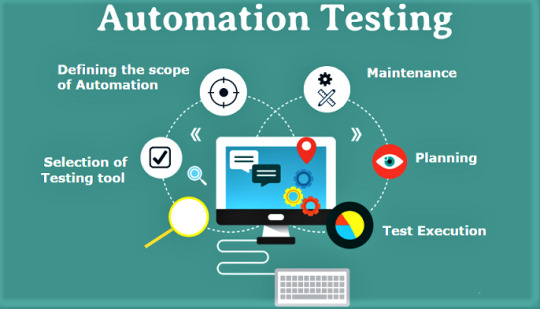
Automation Testing Market Report Highlights
The services segment dominated the market and accounted for over 56% of the global revenue owing to rapid advancements in implementation services, which make it easier to include automation into a functioning infrastructure for software testing
With the aid of this service, automation is integrated into an existing software automation testing setup
The large enterprises segment held the largest revenue share in 2022 as it helps improve efficiency, reduce manual effort, increase test coverage, and ensure the quality of software applications
The BFSI segment is estimated to have significant growth over the forecast period; adopting digitalization in the BFSI sector creates a significant demand for application software automation testing
Gain deeper insights on the market and receive your free copy with TOC now @: Automation Testing Market Report
The emerging use of RPA to automate time-consuming, error-prone manual processes are just a few instances of the usage of AI & ML in automation testing. Moreover, a bot uses the page’s numerous links and web forms to systematically explore through an online application when web crawling or spidering. This is a new use for AI and ML in automation testing. This approach is typically used for indexing online browsing. It may be improved further to perform reverse engineering on an application being tested and automatically find Test Cases. Emerging automation testing tools are significantly fueling market growth.
For instance, Testcraft, a codeless Selenium test automation platform for regression and continuous testing, as well as monitoring of web applications, is gaining traction among users. Their revolutionary AI tech removes maintenance time and cost, as it certainly affects changes in the app. Similarly, Applitools Eyes, Testim, and Test.ai are more automation testing tools propelling the market growth. Furthermore, mergers and acquisitions by other key players are propelling market growth. For instance, in 2022, to improve the user experience on 5G smartphones, Key sight introduced AI-driven and automated testing. Automation and AI enable mobile service providers and app developers to more swiftly evaluate how smartphone users engage with native apps in the real world.
#Automation Testing#Quality Assurance#Software Testing#Test Automation#Continuous Testing#Test Automation Framework#DevOps Testing#Selenium#Test Automation Tools#Performance Testing#Regression Testing#Agile Testing#UIAutomation#Test Scripting#Test Automation Engineer#Codeless Automation#Automation Strategy#CI/CDTesting#Test Automation Best Practices
0 notes
Text

B-2 Gets Big Upgrade with New Open Mission Systems Capability
July 18, 2024 | By John A. Tirpak
The B-2 Spirit stealth bomber has been upgraded with a new open missions systems (OMS) software capability and other improvements to keep it relevant and credible until it’s succeeded by the B-21 Raider, Northrop Grumman announced. The changes accelerate the rate at which new weapons can be added to the B-2; allow it to accept constant software updates, and adapt it to changing conditions.
“The B-2 program recently achieved a major milestone by providing the bomber with its first fieldable, agile integrated functional capability called Spirit Realm 1 (SR 1),” the company said in a release. It announced the upgrade going operational on July 17, the 35th anniversary of the B-2’s first flight.
SR 1 was developed inside the Spirit Realm software factory codeveloped by the Air Force and Northrop to facilitate software improvements for the B-2. “Open mission systems” means that the aircraft has a non-proprietary software architecture that simplifies software refresh and enhances interoperability with other systems.
“SR 1 provides mission-critical capability upgrades to the communications and weapons systems via an open mission systems architecture, directly enhancing combat capability and allowing the fleet to initiate a new phase of agile software releases,” Northrop said in its release.
The system is intended to deliver problem-free software on the first go—but should they arise, correct software issues much earlier in the process.
The SR 1 was “fully developed inside the B-2 Spirit Realm software factory that was established through a partnership with Air Force Global Strike Command and the B-2 Systems Program Office,” Northrop said.
The Spirit Realm software factory came into being less than two years ago, with four goals: to reduce flight test risk and testing time through high-fidelity ground testing; to capture more data test points through targeted upgrades; to improve the B-2’s functional capabilities through more frequent, automated testing; and to facilitate more capability upgrades to the jet.
The Air Force said B-2 software updates which used to take two years can now be implemented in less than three months.
In addition to B61 or B83 nuclear weapons, the B-2 can carry a large number of precision-guided conventional munitions. However, the Air Force is preparing to introduce a slate of new weapons that will require near-constant target updates and the ability to integrate with USAF’s evolving long-range kill chain. A quicker process for integrating these new weapons with the B-2’s onboard communications, navigation, and sensor systems was needed.
The upgrade also includes improved displays, flight hardware and other enhancements to the B-2’s survivability, Northrop said.
“We are rapidly fielding capabilities with zero software defects through the software factory development ecosystem and further enhancing the B-2 fleet’s mission effectiveness,” said Jerry McBrearty, Northrop’s acting B-2 program manager.
The upgrade makes the B-2 the first legacy nuclear weapons platform “to utilize the Department of Defense’s DevSecOps [development, security, and operations] processes and digital toolsets,” it added.
The software factory approach accelerates adding new and future weapons to the stealth bomber, and thus improve deterrence, said Air Force Col. Frank Marino, senior materiel leader for the B-2.
The B-2 was not designed using digital methods—the way its younger stablemate, the B-21 Raider was—but the SR 1 leverages digital technology “to design, manage, build and test B-2 software more efficiently than ever before,” the company said.
The digital tools can also link with those developed for other legacy systems to accomplish “more rapid testing and fielding and help identify and fix potential risks earlier in the software development process.”
Following two crashes in recent years, the stealthy B-2 fleet comprises 19 aircraft, which are the only penetrating aircraft in the Air Force’s bomber fleet until the first B-21s are declared to have achieved initial operational capability at Ellsworth Air Force Base, S.D. A timeline for IOC has not been disclosed.
The B-2 is a stealthy, long-range, penetrating nuclear and conventional strike bomber. It is based on a flying wing design combining LO with high aerodynamic efficiency. The aircraft’s blended fuselage/wing holds two weapons bays capable of carrying nearly 60,000 lb in various combinations.
Spirit entered combat during Allied Force on March 24, 1999, striking Serbian targets. Production was completed in three blocks, and all aircraft were upgraded to Block 30 standard with AESA radar. Production was limited to 21 aircraft due to cost, and a single B-2 was subsequently lost in a crash at Andersen, Feb. 23, 2008.
Modernization is focused on safeguarding the B-2A’s penetrating strike capability in high-end threat environments and integrating advanced weapons.
The B-2 achieved a major milestone in 2022 with the integration of a Radar Aided Targeting System (RATS), enabling delivery of the modernized B61-12 precision-guided thermonuclear freefall weapon. RATS uses the aircraft’s radar to guide the weapon in GPS-denied conditions, while additional Flex Strike upgrades feed GPS data to weapons prerelease to thwart jamming. A B-2A successfully dropped an inert B61-12 using RATS on June 14, 2022, and successfully employed the longer-range JASSM-ER cruise missile in a test launch last December.
Ongoing upgrades include replacing the primary cockpit displays, the Adaptable Communications Suite (ACS) to provide Link 16-based jam-resistant in-flight retasking, advanced IFF, crash-survivable data recorders, and weapons integration. USAF is also working to enhance the fleet’s maintainability with LO signature improvements to coatings, materials, and radar-absorptive structures such as the radome and engine inlets/exhausts.
Two B-2s were damaged in separate landing accidents at Whiteman on Sept. 14, 2021, and Dec. 10, 2022, the latter prompting an indefinite fleetwide stand-down until May 18, 2023. USAF plans to retire the fleet once the B-21 Raider enters service in sufficient numbers around 2032.
Contractors: Northrop Grumman; Boeing; Vought.
First Flight: July 17, 1989.
Delivered: December 1993-December 1997.
IOC: April 1997, Whiteman AFB, Mo.
Production: 21.
Inventory: 20.
Operator: AFGSC, AFMC, ANG (associate).
Aircraft Location: Edwards AFB, Calif.; Whiteman AFB, Mo.
Active Variant: •B-2A. Production aircraft upgraded to Block 30 standards.
Dimensions: Span 172 ft, length 69 ft, height 17 ft.
Weight: Max T-O 336,500 lb.
Power Plant: Four GE Aviation F118-GE-100 turbofans, each 17,300 lb thrust.
Performance: Speed high subsonic, range 6,900 miles (further with air refueling).
Ceiling: 50,000 ft.
Armament: Nuclear: 16 B61-7, B61-12, B83, or eight B61-11 bombs (on rotary launchers). Conventional: 80 Mk 62 (500-lb) sea mines, 80 Mk 82 (500-lb) bombs, 80 GBU-38 JDAMs, or 34 CBU-87/89 munitions (on rack assemblies); or 16 GBU-31 JDAMs, 16 Mk 84 (2,000-lb) bombs, 16 AGM-154 JSOWs, 16 AGM-158 JASSMs, or eight GBU-28 LGBs.
Accommodation: Two pilots on ACES II zero/zero ejection seats.
21 notes
·
View notes
Text
#application testing#agile testing#validation testing#ai automation testing#software testing#Performance Testing#web application testing#mobile application testing
0 notes
Text

By ensuring your software is meticulously tested for global readiness, we help you deliver seamless user experiences across diverse languages and cultures. Let's transform your product into a global phenomenon, reaching audiences far and wide with precision and reliability. https://bit.ly/3EKzvs2 #SDET #GlobalProduct #LanguageGap #SoftwareTesting #UserExperience #Localization SDET Tech
#Software Testing Companies in India#Software Testing Services in India#Test Automation Development Services#Test Automation Services#Performance testing services#Load testing services#Performance and Load Testing Services#Software Performance Testing Services#Functional Testing Services#Globalization Testing services#Globalization Testing Company#Accessibility testing services
Agile Testing Services#Mobile Testing Services#Mobile Apps Testing Services#ecommerce performance testing#ecommerce load testing#load and performance testing services#performance testing solutions#product performance testing#application performance testing services#software testing startups#benefits of load testing#agile performance testing methodology#agile testing solutions#mobile testing challenges#cloud based mobile testing#automated mobile testing#performance engineering & testing services#performance testing company#performance testing company in usa
0 notes
Text
Cloud Computing: Definition, Benefits, Types, and Real-World Applications
In the fast-changing digital world, companies require software that matches their specific ways of working, aims and what their customers require. That’s when you need custom software development services. Custom software is made just for your organization, so it is more flexible, scalable and efficient than generic software.
What does Custom Software Development mean?
Custom software development means making, deploying and maintaining software that is tailored to a specific user, company or task. It designs custom Software Development Services: Solutions Made Just for Your Business to meet specific business needs, which off-the-shelf software usually cannot do.
The main advantages of custom software development are listed below.
1. Personalized Fit
Custom software is built to address the specific needs of your business. Everything is designed to fit your workflow, whether you need it for customers, internal tasks or industry-specific functions.
2. Scalability
When your business expands, your software can also expand. You can add more features, users and integrations as needed without being bound by strict licensing rules.
3. Increased Efficiency
Use tools that are designed to work well with your processes. Custom software usually automates tasks, cuts down on repetition and helps people work more efficiently.
4. Better Integration
Many companies rely on different tools and platforms. You can have custom software made to work smoothly with your CRMs, ERPs and third-party APIs.
5. Improved Security
You can set up security measures more effectively in a custom solution. It is particularly important for industries that handle confidential information, such as finance, healthcare or legal services.
Types of Custom Software Solutions That Are Popular
CRM Systems
Inventory and Order Management
Custom-made ERP Solutions
Mobile and Web Apps
eCommerce Platforms
AI and Data Analytics Tools
SaaS Products
The Process of Custom Development
Requirement Analysis
Being aware of your business goals, what users require and the difficulties you face in running the business.
Design & Architecture
Designing a software architecture that can grow, is safe and fits your requirements.
Development & Testing
Writing code that is easy to maintain and testing for errors, speed and compatibility.
Deployment and Support
Making the software available and offering support and updates over time.
What Makes Niotechone a Good Choice?
Our team at Niotechone focuses on providing custom software that helps businesses grow. Our team of experts works with you throughout the process, from the initial idea to the final deployment, to make sure the product is what you require.
Successful experience in various industries
Agile development is the process used.
Support after the launch and options for scaling
Affordable rates and different ways to work together
Final Thoughts
Creating custom software is not only about making an app; it’s about building a tool that helps your business grow. A customized solution can give you the advantage you require in the busy digital market, no matter if you are a startup or an enterprise.
#software development company#development company software#software design and development services#software development services#custom software development outsourcing#outsource custom software development#software development and services#custom software development companies#custom software development#custom software development agency#custom software development firms#software development custom software development#custom software design companies#custom software#custom application development#custom mobile application development#custom mobile software development#custom software development services#custom healthcare software development company#bespoke software development service#custom software solution#custom software outsourcing#outsourcing custom software#application development outsourcing#healthcare software development
2 notes
·
View notes
Text
How does AI contribute to the automation of software testing?
AI-Based Testing Services

In today’s modern rapid growing software development competitive market, ensuring and assuming quality while keeping up with fast release cycles is challenging and a vital part. That’s where AI-Based Testing comes into play and role. Artificial Intelligence - Ai is changing the software testing and checking process by making it a faster, smarter, and more accurate option to go for.
Smart Test Case Generation:
AI can automatically & on its own analyze past test results, user behavior, and application logic to generate relevant test cases with its implementation. This reduces the burden on QA teams, saves time, and assures that the key user and scenarios are always covered—something manual processes might overlook and forget.
Faster Bug Detection and Resolution:
AI-Based Testing leverages the machine learning algorithms to detect the defects more efficiently by identifying the code patterns and anomalies in the code behavior and structure. This proactive approach helps and assists the testers to catch the bugs as early as possible in the development cycle, improving product quality and reducing the cost of fixes.
Improved Test Maintenance:
Even a small or minor UI change can break or last the multiple test scripts in traditional automation with its adaptation. The AI models can adapt to these changes, self-heal broken scripts, and update them automatically. This makes test maintenance less time-consuming and more reliable.
Enhanced Test Coverage:
AI assures that broader test coverage and areas are covered by simulating the realtime-user interactions and analyzing vast present datasets into the scenario. It aids to identify the edge cases and potential issues that might not be obvious to human testers. As a result, AI-based testing significantly reduces the risk of bugs in production.
Predictive Analytics for Risk Management:
AI tools and its features can analyze the historical testing data to predict areas of the application or product crafted that are more likely to fail. This insight helps the teams to prioritize their testing efforts, optimize resources, and make better decisions throughout the development lifecycle.
Seamless Integration with Agile and DevOps:
AI-powered testing tools are built to support continuous testing environments. They integrate seamlessly with CI/CD pipelines, enabling faster feedback, quick deployment, and improved collaboration between development and QA teams.
Top technology providers like Suma Soft, IBM, Cyntexa, and Cignex lead the way in AI-Based Testing solutions. They offer and assist with customized services that help the businesses to automate down the Testing process, improve the software quality, and accelerate time to market with advanced AI-driven tools.
#it services#technology#software#saas#saas development company#saas technology#digital transformation#software testing
2 notes
·
View notes